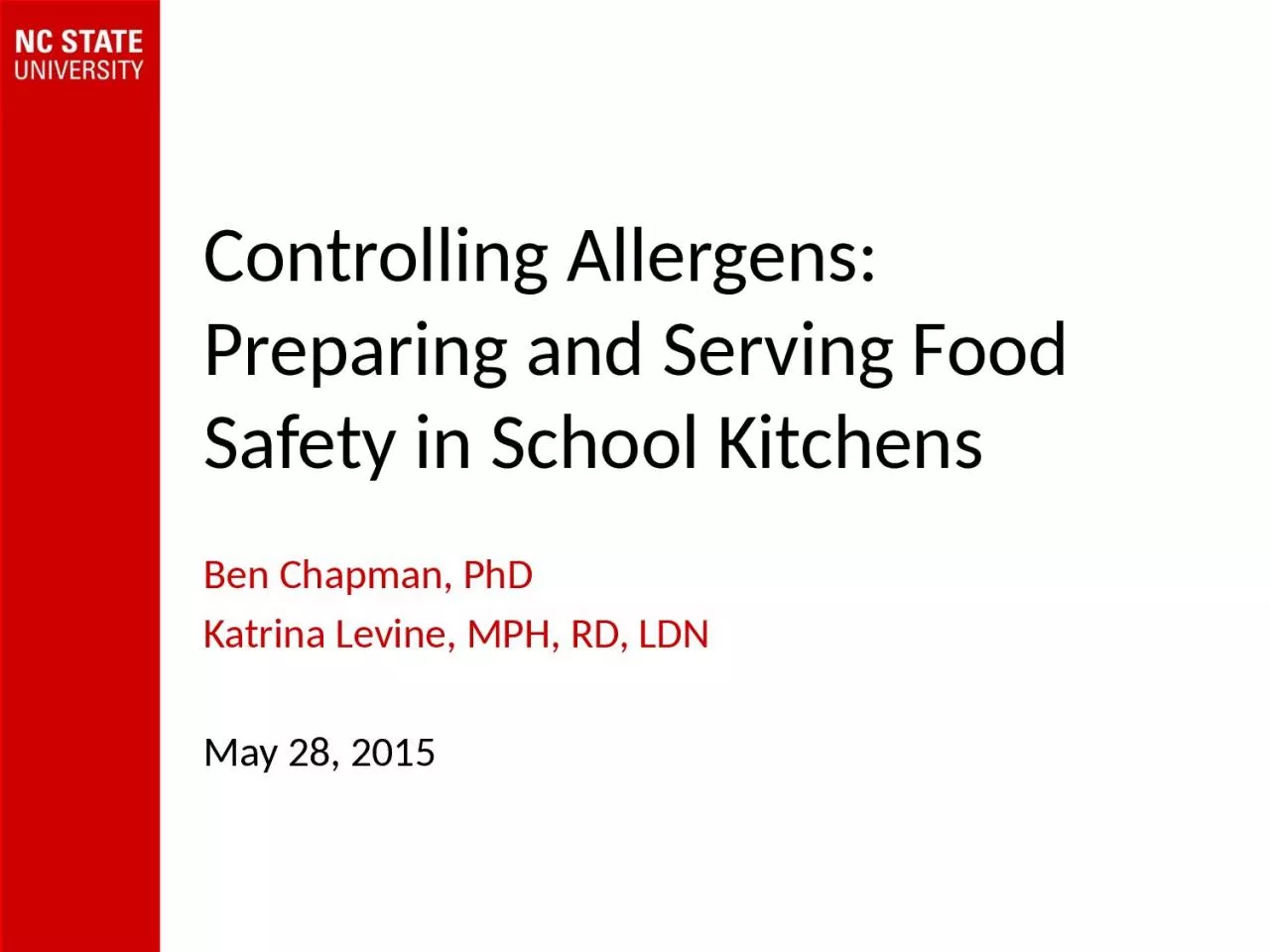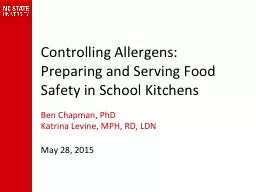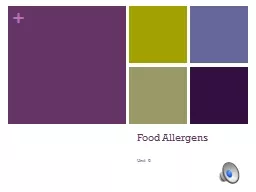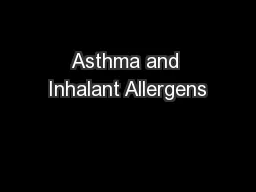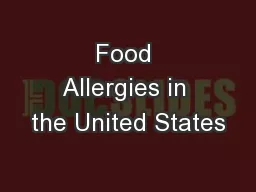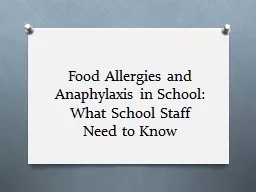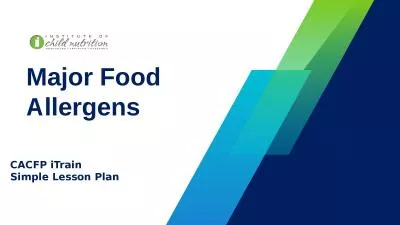PPT-Controlling Allergens: Preparing and Serving Food Safety in School Kitchens
Author : emily | Published Date : 2023-11-22
Ben Chapman PhD Katrina Levine MPH RD LDN May 28 2015 What is a Food Allergy Immune system has a negative reaction to something in a food Something in the food causes
Presentation Embed Code
Download Presentation
Download Presentation The PPT/PDF document "Controlling Allergens: Preparing and Ser..." is the property of its rightful owner. Permission is granted to download and print the materials on this website for personal, non-commercial use only, and to display it on your personal computer provided you do not modify the materials and that you retain all copyright notices contained in the materials. By downloading content from our website, you accept the terms of this agreement.
Controlling Allergens: Preparing and Serving Food Safety in School Kitchens: Transcript
Download Rules Of Document
"Controlling Allergens: Preparing and Serving Food Safety in School Kitchens"The content belongs to its owner. You may download and print it for personal use, without modification, and keep all copyright notices. By downloading, you agree to these terms.
Related Documents

